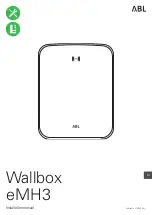
Remember: ABS does not change the time you
need to get your foot up to the brake pedal
or always decrease stopping distance. If you get
too close to the vehicle in front of you, you will not
have time to apply your brakes if that vehicle
suddenly slows or stops. Always leave enough
room up ahead to stop, even though you
have ABS.
Using ABS
Do not pump the brakes. Just hold the brake
pedal down firmly and let anti-lock work for you.
You may feel a slight brake pedal pulsation
or notice some noise, but this is normal.
Braking in Emergencies
With ABS, you can steer and brake at the same
time. In many emergencies, steering can help you
more than even the very best braking.
Traction Control System (TCS)
Your vehicle may have a traction control system
that limits wheel spin. This is especially useful
in slippery road conditions. The system operates if
it senses that one or both of the front wheels
are spinning or beginning to lose traction. When
this happens, the system brakes the spinning
wheel(s) and/or reduces engine power to
limit wheel spin.
The TRACTION CONTROL ACTIVE message will
come on in the Driver Information Center (DIC)
when the traction control system is limiting wheel
spin. You may feel or hear the system working,
but this is normal.
If your vehicle is in cruise control when the
traction control system begins to limit wheel spin,
the cruise control will automatically disengage.
When road conditions allow you to safely
use it again, you may re-engage the cruise control.
379
Summary of Contents for Uplander
Page 6: ...These are some examples of symbols that may be found on the vehicle 6 ...
Page 34: ...Put someone on it Get it up to speed Then stop the vehicle The rider does not stop 34 ...
Page 188: ... NOTES 188 ...
Page 191: ... NOTES 191 ...
Page 192: ...Instrument Panel Overview 192 ...
Page 534: ... NOTES 534 ...
Page 551: ...Engine Drive Belt Routing 3 9L V6 Engine and 3 9L V6 Flexible Fuel 551 ...
Page 576: ... NOTES 576 ...
















































